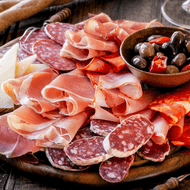Resilience of Meat Consumption in the UK
Posted by Emma on 9th Apr 2024 Reading Time:
Despite evolving dietary preferences over the past five years, influenced by Covid lockdowns and escalating food prices, meat continues to be a central component of meals for many in the UK. Recent data reveals an upswing in meat consumption during lunch and dinner times, undeterred by the financial strains of the past year.

Research from Kantar indicates that 53.1% of meals include meat, fish, and poultry, with red meat present in 27.8% of lunch and dinner occasions, a slight increase from 27.6% the previous year. There's a noticeable trend of more people incorporating meat into their lunches since the pandemic in 2019, opting for items like cooked meats, pies, and sandwiches. The rising cost of living has prompted a significant shift towards more affordable meat cuts as a cost-saving measure.
Amid economic pressures, there's a growing emphasis on satiety, with the desire for filling meals rising from 27.5% to 29.2% over four years. To extend their meals, consumers increasingly turn to cost-effective carbohydrates such as rice and pasta, utilising pantry items more efficiently and planning meals meticulously to minimise waste.
Vanessa Adamson, a respected Consumer Insight Manager at AHDB, sees significant potential for red meat in home and family dining. She emphasises the importance of promoting meals that are easy to prepare and contribute to a healthy, balanced diet. "We [must] continue to highlight meaty meals that are easy to prepare and part of a healthy balanced diet," Adamson asserts. She advocates for initiatives like AHDB's 'Let's Eat Balanced' campaign to enhance consumer awareness and cultivate a lasting positive perception of sustainably produced British red meat and dairy.
We invite you to share your insights and perspectives below. How do changing economic conditions affect your meal choices? Do you see a place for red meat in a balanced diet amid these shifts? Join the conversation below.

